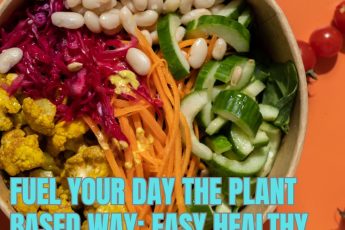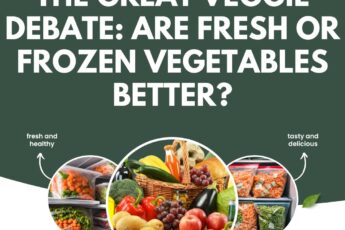Going vegan has become increasingly popular due to its many health benefits, including a reduced risk of chronic diseases like heart disease, type 2 diabetes, and certain cancers. Despite these benefits, there is still a common misconception that plant based diets lack sufficient protein, and most people don’t understand the vegan complete protein combinations you can do to achieve the right dietary balance. We touched briefly on this on a previous Topic of the Week: “VEGAN MYTHS DEBUNKED: SEPARATING THE FACT FROM FICTION SECRETS” and want to delve a little deeper into that subject today. Let’s dig into why these complete proteins are important, what plant based foods are naturally complete, and which vegan complete protein combinations you can eat throughout the day to achieve the optimal protein balance for a plant based diet. Keep in mind that if you are eating a balanced plant based diet throughout the day you are probably organically getting all the complete protein that you need without even thinking about it – but understanding the science behind the concept is a good idea.
The Science Behind Complete Proteins:
Proteins are made up of amino acids, which are the building blocks of life. They play a crucial role in a wide range of bodily functions, including the building and repair of tissues, the production of enzymes, hormones, and neurotransmitters, and the transport and storage of nutrients. They also contribute to the formation of antibodies that help protect against infection and disease.
There are 20 different types of amino acids that can be combined to form a protein. Out of these, nine are essential amino acids that cannot be produced by the body and must be obtained through diet. Animal-based proteins such as meat, poultry, fish, eggs, and dairy products are complete proteins, which means they contain all nine essential amino acids in sufficient quantities. With plant based eating it gets a little more complicated because there are fewer naturally complete proteins, but with some understanding of how they work, you can still get the same result for your body’s needs.
Naturally Plant Based Complete Proteins:
Now that you understand the importance of complete proteins in your diet, let’s talk about some plant based foods that are naturally complete proteins on their own. While there are not a ton of these foods, there are a few basic staples that can be found in most vegan households:
The Soybean Family: TOFU, Tempeh, and Edamame
Grains: Quinoa, Amaranth, and Buckwheat
By far the most common among of these plant based complete proteins are tofu, quinoa, and edamame. Tofu is an easy plant based meat substitute taking on the flavors of whatever seasoning you use. Quinoa is an outstanding base for a lunchtime salad or a side dish for an evening meal. And edamame is a guilt-free snack at any time of the day. Incorporating these few foods into your weekly rotation is a great start to getting the right protein for your body.
How to Achieve Vegan Complete Protein Combinations on a Plant Based Diet:
You don’t solely need to eat plant based foods that are complete proteins to get these critical amino acids. You can still get the balance you need by combining a few separate plant based protein sources together to achieve the same result. Even better, you don’t have to have these combinations in one sitting, you can eat them separately throughout the day and still get the complete protein balance you are searching for.
The easiest example of combining “complementary proteins” together could be something like peanut butter with whole-grain toast. Together they form all of the nutrients found in complete protein. This is something you could eat most mornings for breakfast that is easy, filling, and a great way to start your nutritional day. Top it off with a little hemp and chia seeds and you are really amping it up.
Here are a few more examples of easy combinations you can make:
- Rice and beans
- Lentil soup with whole-grain bread
- Hummus and whole-grain pita bread
- Tofu stir-fry with brown rice
- Seitan (wheat protein) and quinoa salad
- Edamame and brown rice
- Spinach salad with almonds and chickpeas
- Loaded veggie salad with sunflower kernels
- Chia seed pudding with almond milk
- Buckwheat noodles with tofu and vegetables
- Vegetarian chili with cornbread
- Oatmeal with chia seeds and almonds
- Whole-grain pasta with lentil Bolognese sauce
These are just a few easy vegan complete protein combinations to incorporate together to reap the many benefits of living a plant based lifestyle. If you want to explore more about this topic, you can refer to a very informative article by the Cleveland Clinic “WHAT ARE COMPLETE PROTEINS” or the Healthline article “13 NEARLY COMPLETE PROTEIN SOURCES FOR VEGETARIANS AND VEGANS.” It’s also a great idea to consult with a physician to make sure that this lifestyle is right for you. It is worth understanding the science behind complete proteins so that you can ensure your body is functioning with the right fuel to keep it operating in tip-top shape.






